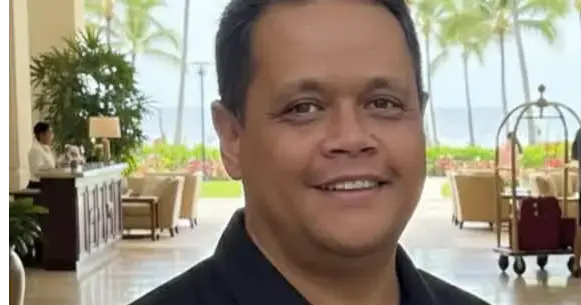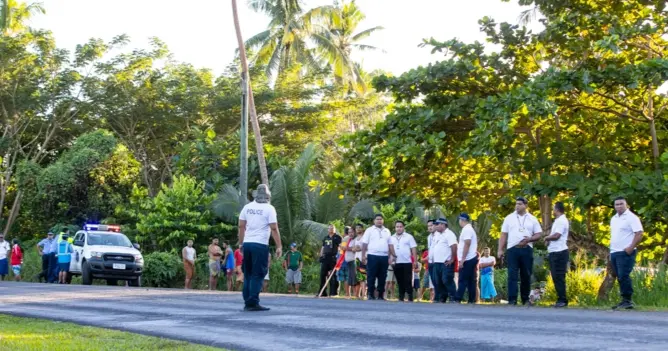Inadequate hypertension treatment rife: report
 By Sapeer Mayron
•
10 February 2020, 9:00AM
By Sapeer Mayron
•
10 February 2020, 9:00AM
Less than 20 per cent of Samoans with hypertension are receiving treatment and just five percent have their blood pressure under control, landmark research by the World Bank has found.
Non-communicable diseases (N.C.D.s.) such as hypertension cause two thirds of premature deaths in Samoa; since 2016 the country has made controlling those diseases a national priority.
In 2018, the World Bank and Samoa’s Ministry of Health (M.O.H.) teamed up to expose the “breakpoints and gaps” in care for hypertension and other chronic conditions, and ultimately to find solutions.
It is the first cascade study on hypertension and chronic conditions in the Pacific Islands, a style of research that inspects each stage of the health service people are supposed to get to find gaps or problems in it.
Among the key findings, the research discovered that the rates of hypertension in Samoa are growing at an alarming rate.
In 2013, a survey found 28.9 per cent of the Samoa population were hypertensive, a figure that shot up to 38.1 per cent in 2018.
The Director General of M.O.H., Leausa Dr. Take Naseri, said the report is “crucial” to the Government's efforts in managing non-communicable diseases.
“We look forward to implementing the recommendations of this report, in our endeavour to improve the health of Samoan’s through the prevention, management and control of N.C.D.s,” he said, in the report preface.
Hypertension is a medical condition in which blood pressure is constantly too high. It can result in complications like heart disease, stroke and diabetes: as revealed in the 2018 study, of the 78 survey participants with diabetes, 63 per cent were hypertensive.
The report found that getting care and treatment to the hypertensive population was not always straightforward.
“The review of patient data demonstrated that despite the population’s [hypertension] awareness, care seeking is late: among the 300 hypertension patients reviewed, 36 per cent had stage 2 and 35 per cent had stage 3 hypertension at registration, suggesting late diagnosis and acute cardiovascular risks.
“Delayed care seeking is a key contributor and needs to be addressed to prevent premature deaths and comorbidities.”
Interviews with the participants helped open a window onto what was stopping people from getting treatment.
The report also found at the stage of diagnosing the disease, patients reported being scared of what a test might say; being in denial of their results; not being able to pay for health care or choosing traditional healing practices. Others felt they were not at risk or did not know about screening services.
When it came to treatment, high cost and a misunderstanding of patients’ condition were identified as the major barriers to treatment. People could not afford medication or transport to a service, and some did not understand that they needed treatment because hypertension has no symptoms.
These problems continued into the treatment maintenance and monitoring and were compounded by yet more challenges.
The report concluded: “Failing to obtain drugs due to stock-outs, long waiting times at health facilities, negative staff attitudes towards, patients, lack of understanding that condition and treatment are lifelong, forgetting to take pills or running out, poor grasp of medication regimens, conflicting treatment advice as record system fails to provide patient history [and] poor communication of treatment monitoring results.”
Care providers felt the same way, the research found: all agreed that the pressure on their services was greater than ever.
“Staff shortages impacted their ability to identify [hypertension cases, counsel and treat them, do community outreach, or provide health education services necessary for prevention. Also, lack of physical resources was a shared experience of providers as maintenance of existing equipment and ordering of new equipment are challenging. Budget cuts were given as a reason for receiving low quality equipment.”
The report investigated each step of the care required for patients with hypertension. For adults, they found just 68 per cent of men and 80 per cent of women had ever had a blood pressure screening with the intention of identifying hypertension.
Of the 300 adults with hypertension surveyed, researchers found 13 per cent of men had been diagnosed by a healthcare provider or doctor. Of those just 10 per cent had begun treatment, while 2.5 per cent achieved lowered blood pressure targets.
For women, rates were slightly better but still alarming. Researchers found 38 per cent had been diagnosed by a healthcare provider or doctor, and 29 per cent had begun treatment. Nearly seven per cent showed they had reached the blood pressure target while on treatment.
As well as studying their participants, the research broke down their study into two kinds of villages: those that had implemented an award winning healthcare scheme called the P.E.N. Fa’aSamoa, and those that had not.
P.E.N. Fa’aSamoa (or the World Health Organisation’s Package of Essential Non-communicable disease interventions for Samoa) was implemented in only 17 out of 431 villages between 2015 and 2018.
The researchers found that when it comes to having blood pressure screenings, or beginning hypertension treatment, people in villages implementing the P.E.N. Fa’aSamoa performed better.
Ten per cent more people in villages reached by the P.E.N. programme had received blood pressure screenings in the previous 12 months, while P.E.N. village residents registered nearly five percentage point higher rates of hypertension treatment than those in ‘non-P.E.N. villages’ at 21 per cent.
“P.E.N. provided positive results on screening, but did not succeed in improving the final outcome of hypertension treatment success,” the research found, revealing there was less than a per cent difference between those in or out of P.E.N. villages that showed they reached the blood pressure target while on treatment (6.4 vs 6.7 per cent)," the report says.
“This translated to slightly better diagnosis and treatment levels in P.E.N. areas, but the final outcome of [blood pressure] control was poor in all villages regardless of P.E.N. history."
Tags
 By Sapeer Mayron
•
10 February 2020, 9:00AM
By Sapeer Mayron
•
10 February 2020, 9:00AM











